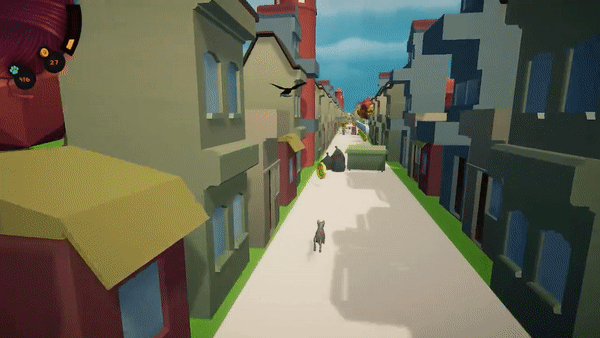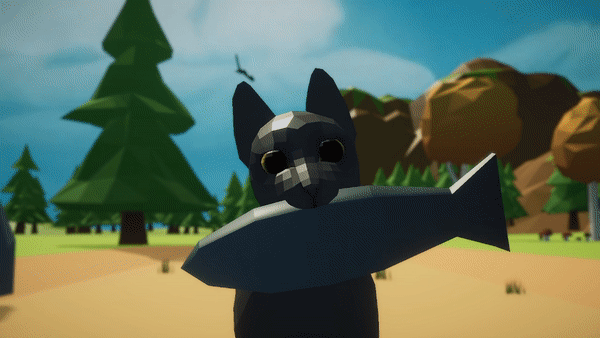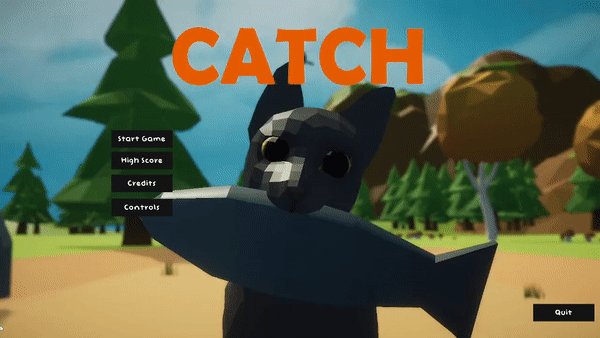Catch
Specifications
-
First project
-
Genre: Endless Runner
-
Made in Unity/C#
-
6 weeks half speed
My Contributions
-
Cameras and Cinemachine
-
Cutscene
-
Animation
-
UI
Cameras and Cinemachine
The very first task I had when making games at The Game Assembly was essentially RnD. The genre for this project was Endless Runner, and our reference game was Temple Run, so we knew from the start that we're going to need to have someone make sure we could do what we needed to do with the cameras. Thus, I decided to be the one to dig into the camera system in Unity and learn to use it.
The educators at the school recommended using the Cinemachine module in Unity. It was a bit of a rough start for me in my game development journey, for sure. It took probably a week or two before I would consider myself having enough understanding of Cinemachine to actually make use of it in the game. I also found that it can be a bit tricky to estimate how much time a RnD task takes to complete.
The camera work during gameplay did not really have to do anything spectacular. It needed to follow behind the player in a third person perspective, and to follow properly when the player makes a turn, which was always a 90 degree turn. Making the camera feel good when the player turned did require some tweaking, though. It should snap pretty hard, so you immediately can see what's in front of you after the turn, but not too hard so that it looks stiff and unorganic.

Cinemachine camera yaw when turning.
The camera when the player jumped, however, required more time to get right. It was much more noticable if the camera was stiff compared to turning, but the camera should also not feel too floaty. The camera movement when landing needed a bit more polish, but overall we got a good result in the end.

Camera movement when jumping needs to be balanced to avoid motion sickness.
Cutscene
One of our animators, is very much interested in making cutscenes, and he was clear from the very start that he'd love to make cutscenes for our game. So we did! And naturally, in-engine cutscenes require a lot of camera work, so this was also a major task for me during the project.
There would be two cutscenes created: intro and outro. They were supposed to be integrated into the game, too. The main menu had a scene rendered in the background, and when you start the game, the menus disappear, and the cameras start the intro, which leads into the start of the first level. The outro cutscene would trigger at the end of the game, and those cameras needed to be set up in the scene and tweaked, as well.

Intro cutscene transitioning into gameplay.
For all that to work, we needed to learn and utilize the director and timeline tools in Unity. The animator I worked with already had a little bit of experience with these tools, so it was a great learning experience for me to get access to his knowledge.
Animation
Working on implementing the cutscenes also required me to be able to work with the Animator tool in Unity, to implement, time and change animations of our actors.
Animations were also used outside cutscenes, of course. And since I had already worked with animations in cutscenes, I could use that knowledge to implement gameplay animations, as well.
UI
When the user would press the start game button, the starting cutscene would play, as I mentioned previously, so it was naturally for me to also work on the UI. Pressing the button should do something with the cameras, after all. I ended up doing the functionality and implementation for the main menu and submenus.
The camera pans that would happen when entering submenus of the main menu was initially just a placeholder effect that I implemented, a way of testing how the Cinemachine module works, but it ended up in the release of the game. I guess we found it to be more interesting than nothing!

Transitions between the cameras used by submenus of the main menu.
Team
We were High 5 Studios.
Programmers
Filip Nygren, Henrik Park, Stefan Pihlstrom, Erik Neuman, Neo Nemeth
Level Designers
Mina Mirhosseini, Mattias Larsson, Linus Lindborg-Persson
Graphical Artists
Felicia Johansson, Linus Härstedt, William Holster
Animators
Daniel Nagy, Hugo Jansson
Audio
Mattias Larsson, Henrik Park, Linus Härstedt, Stefan Pihlstrom
